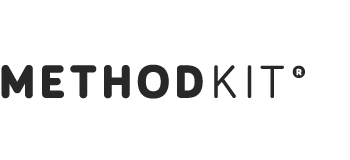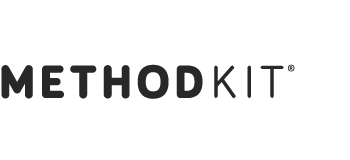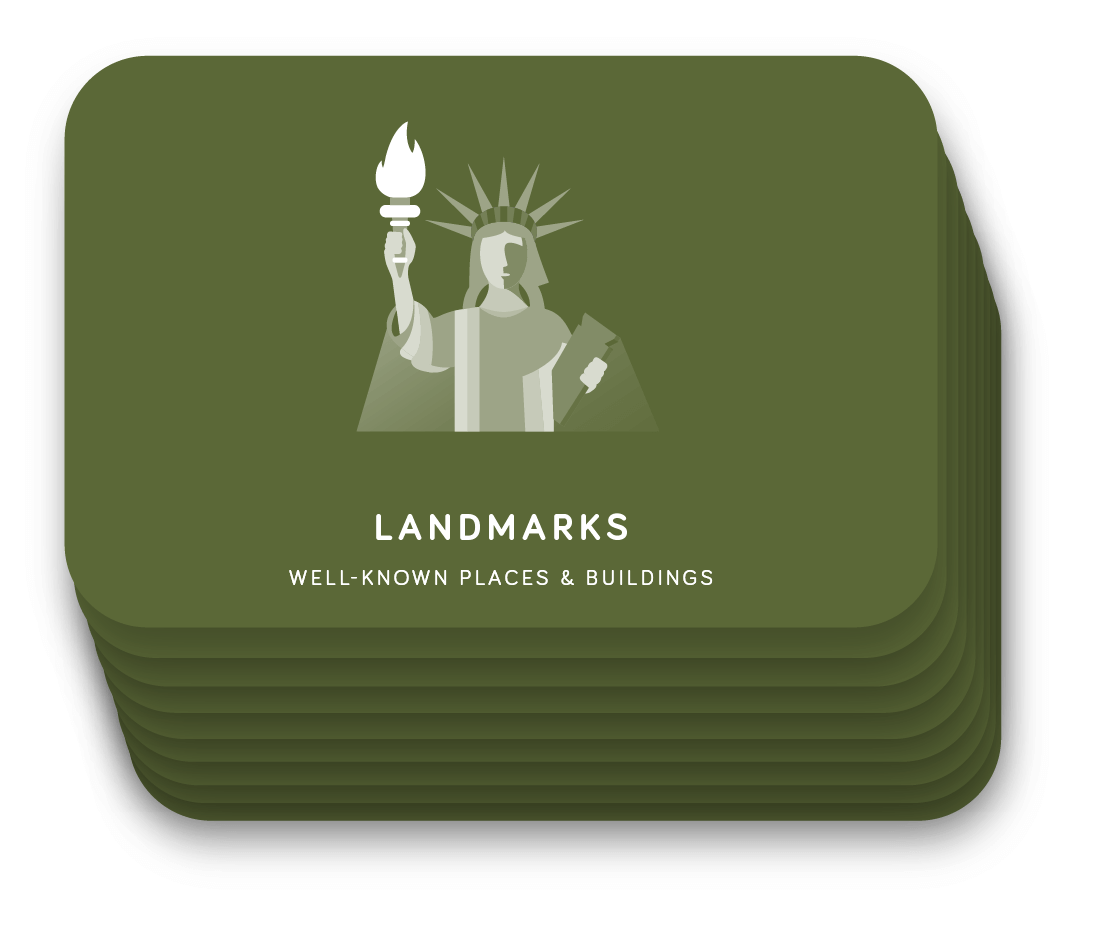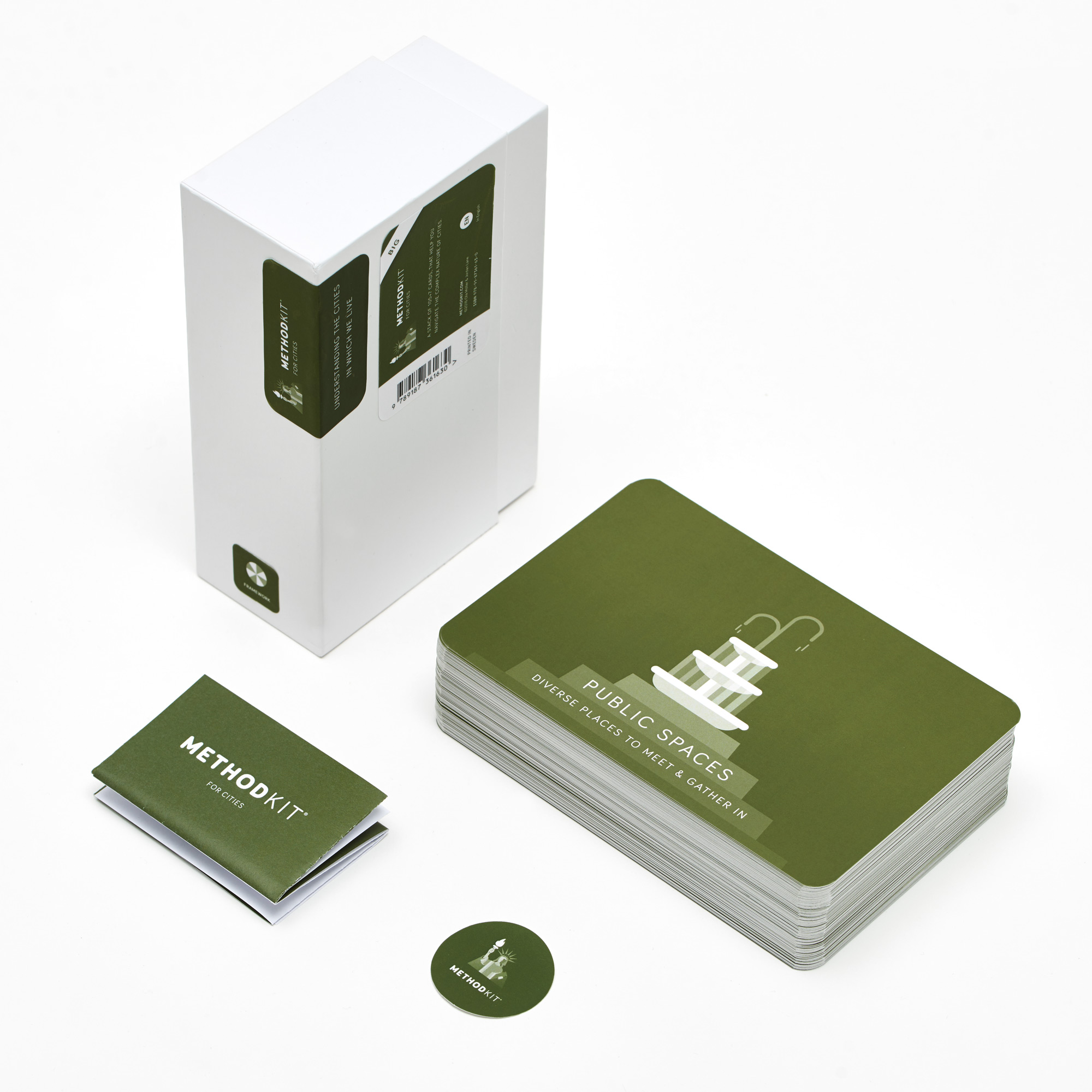MethodKit for Cities was made in collaboration with Jordan Valentin-Lane.
—
WHY METHODKIT FOR CITIES?
Cities are constantly changing. They are dynamic and complex. From liveability and language to climate and communication, cities are not merely buildings or physical spaces. They are inherently social; interwoven by collections of countless individual motivations and collective actions.
We wanted to create a tool that helps you explore the complex social nature of cities and develop an understanding of not just how cities are built, but also how they behave. While some urban planning tools may impose certain solutions, our idea is to readjust the balance between professionalisation and participation by creating a tool as useful to the professional as it is to the new citizen.
By creating a visual overview and common language with which you can explore cities, MethodKit for Cities allows you to address the uncertainty of the city of the future, by providing you with the tools to start to create it together today.
Read more about our thoughts on urban planning in our article The building blocks of the city.
CARDS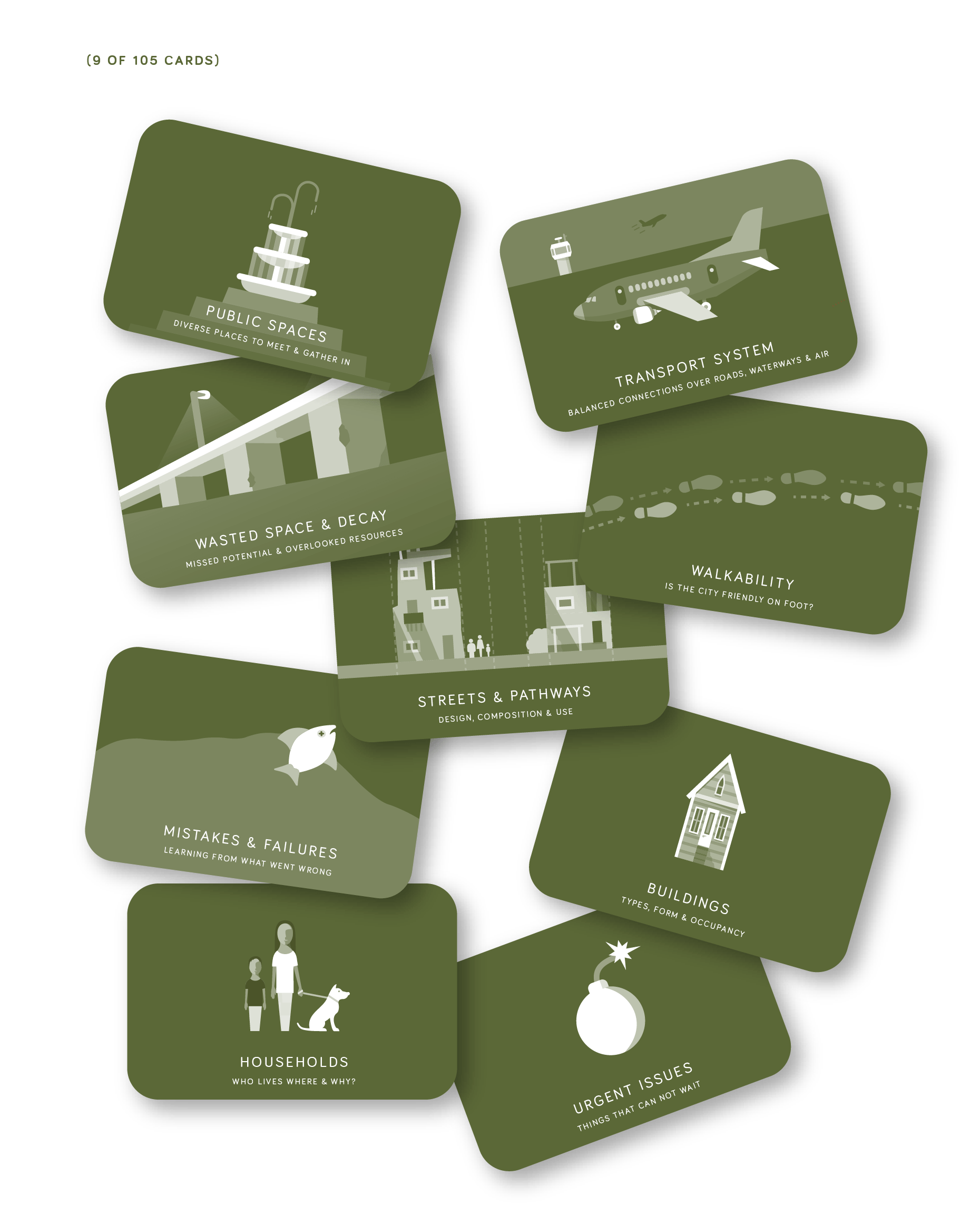
ICONS
![]()
SELECTION CARDS
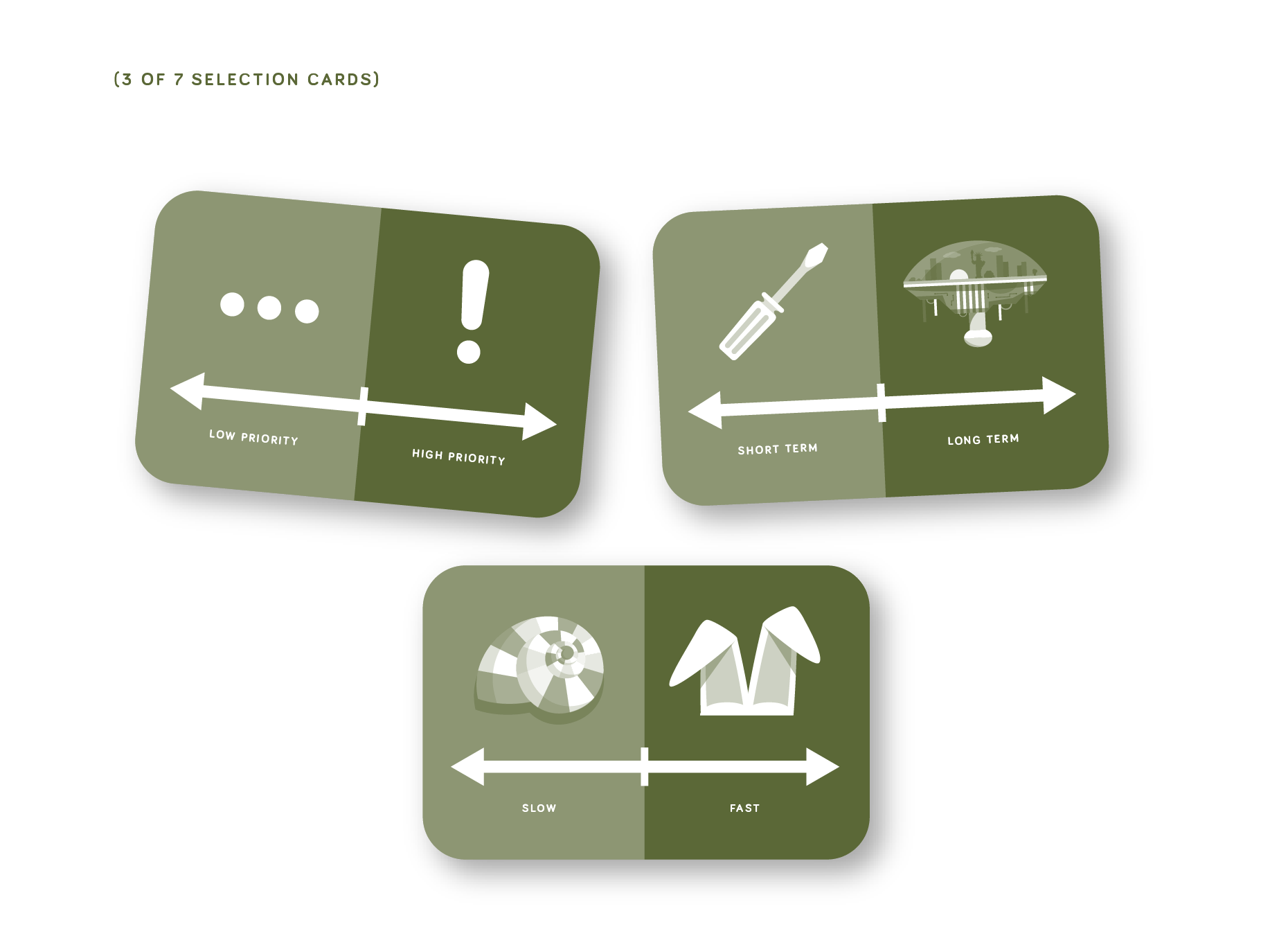
HOW TO USE
Designed to be used at all scales from grand projects to small interventions, MethodKit for Cities offers a visual overview of the most important elements, actions and aspects that make up the fabric of a city. Use it to create a common language in citizen dialogues, to explore new areas with project partners or just to think deeper about the cities we live in.
Different examples how the kit can be used:
- As a tool in architecture & urban design offices. Use the kit in the studio environment to align colleagues, consultants and clients. Use it to create future visions and scenarios or as a research tool and checklist. How do new developments fit into the existing urban fabric? What are your priorities? Did you forget any important perspectives?
- As a tool for schools & universities. Use the kit as a checklist for school projects — what elements are strongest? Are there any parts of missing? Encourage students to embrace complexity and design in real world contexts. Encourage conversation and debate by having students prioritise the cards — why are some building blocks more important than others? How does this change with time?
- As an educational tool for citizens. Many citizens have a profound interest about the city. Use the tool to help people understand the fabric of the city, with different perspectives and lenses. Knowledge is power.
- As a planning tool between architects, the city and its citizens. Use the tool as an interface. We made a tool that have a easy to understand language without dumbing down the underlying concepts of the city. We want people to sit at the table, take part, and feel comfortable in understanding and sharing ideas.
- As tool for data collection. Use the tool should be used for data collection. Can you give each card a value to create an inventory of local areas? You could ask citizens, friends, neighbours what they value in their local area.
Check out more general examples of how the cards can be used in workshops, at our How to use page. You can also read more about our thoughts on urban planning in our article The building blocks of the city.
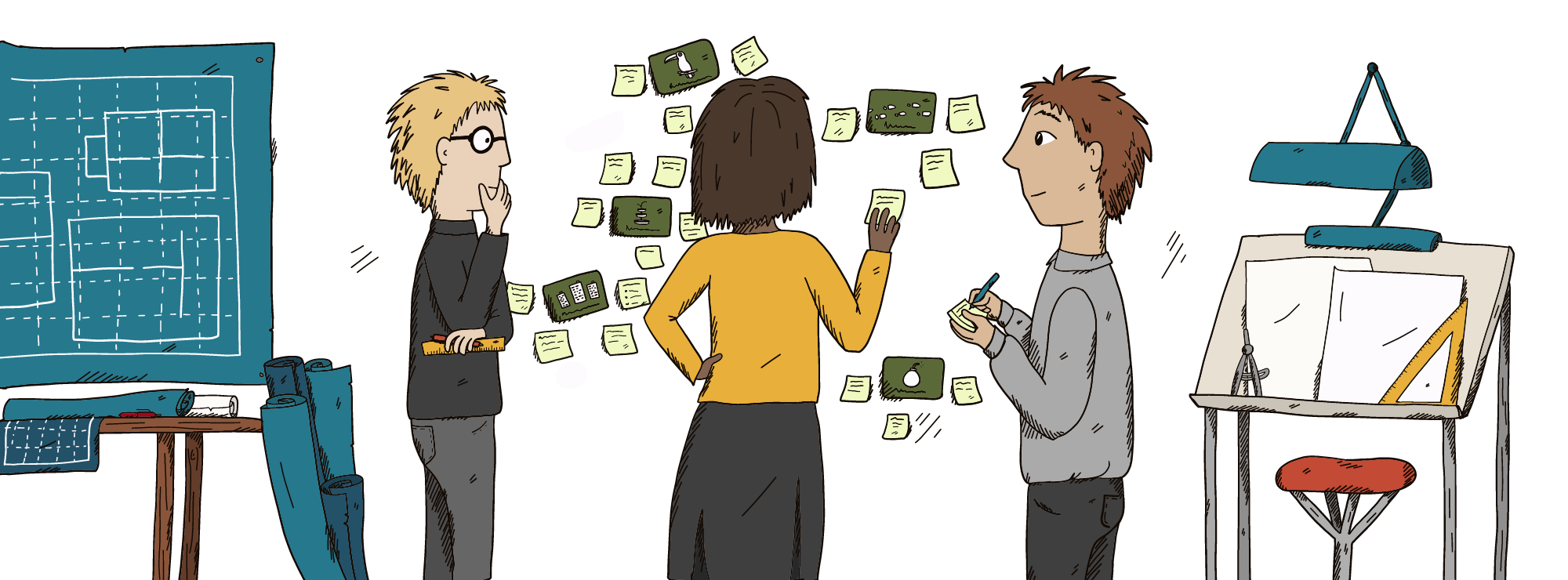
TECH SPECIFICATIONS
LARGE:
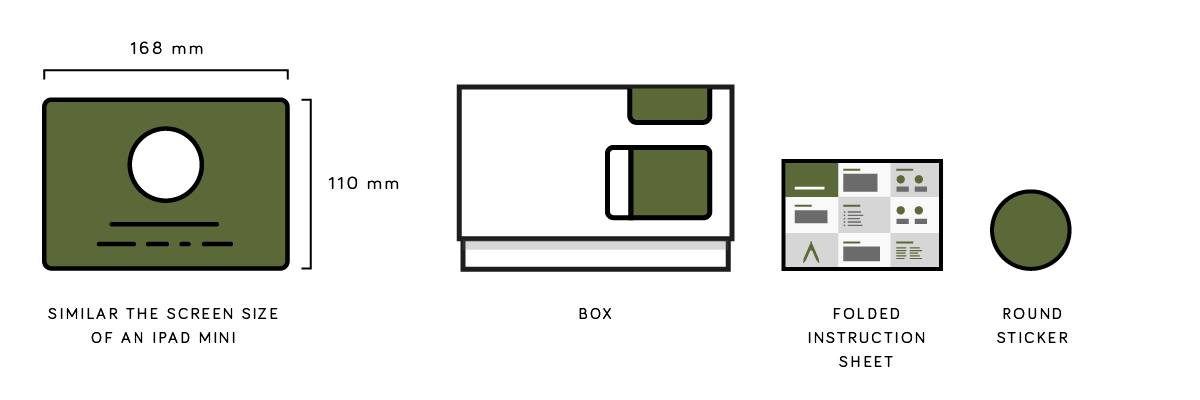
Paper: 350g/m3
Lamination: Matte
Printed in Stockholm
